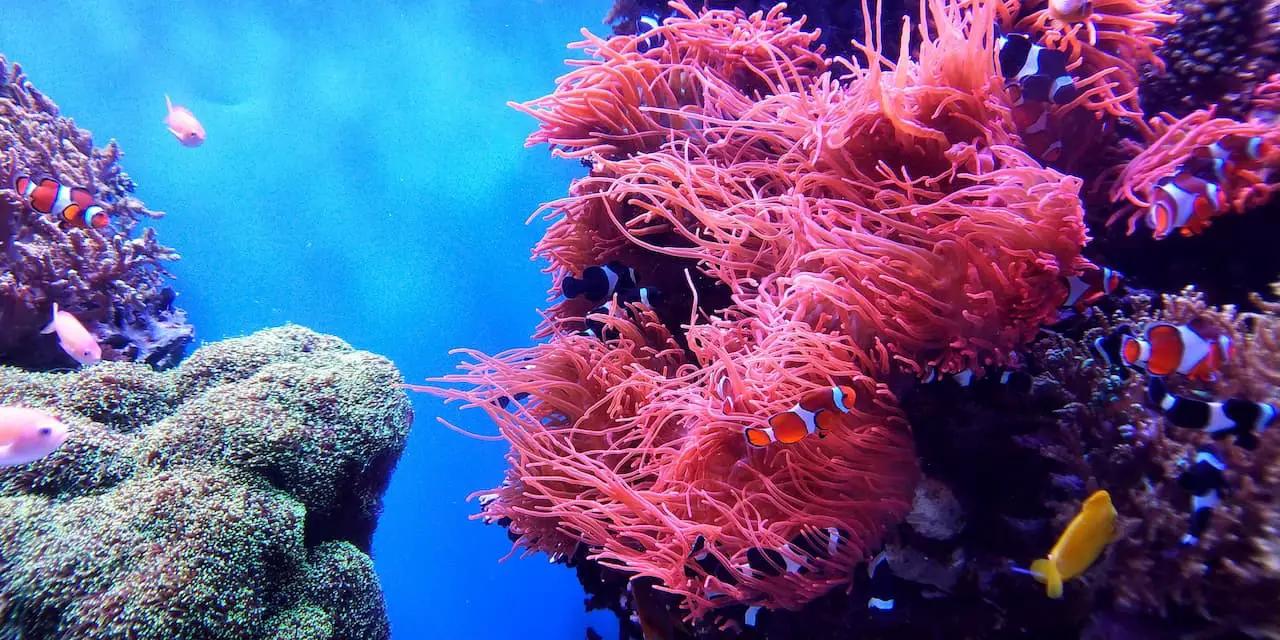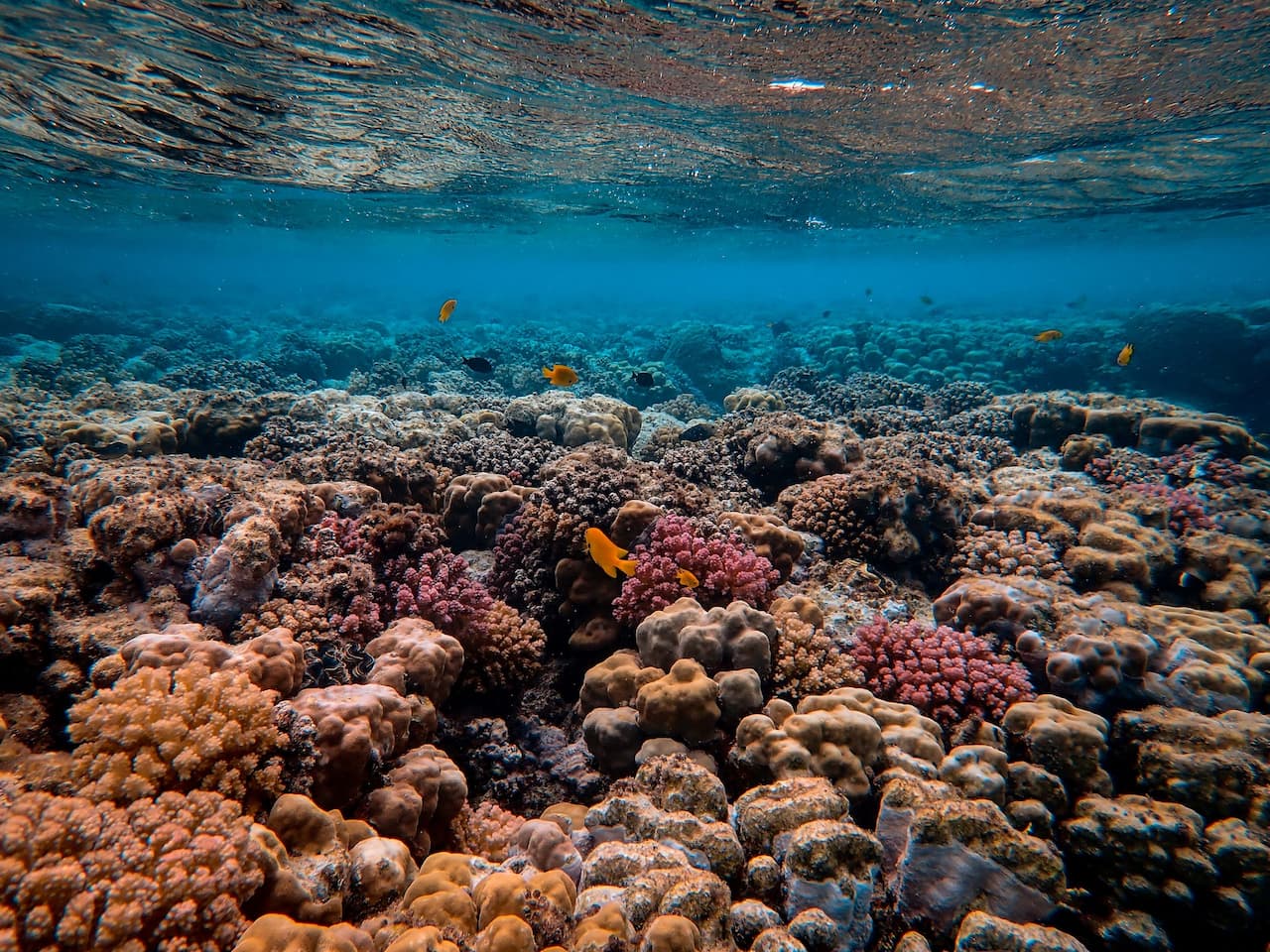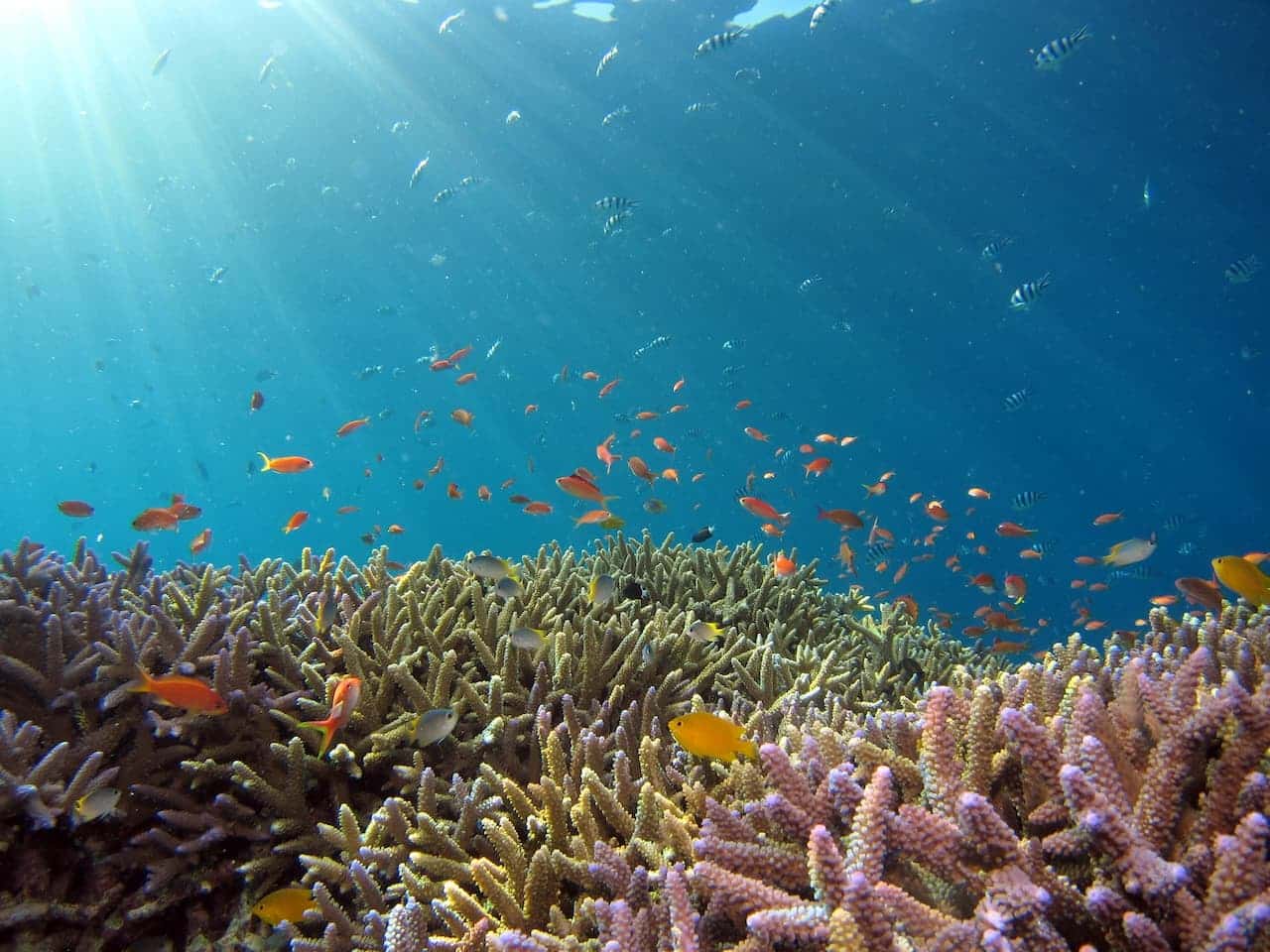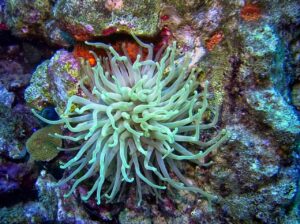When it comes to ecological diversity, coral reefs are among the highest. The invertebrates responsible for producing reefs are called coral polyps, and they come in many different shapes and sizes, including enormous colonies, beautiful fans, and small, lonely species.
There are thousands of different types of coral, some of which thrive in the warm, shallow waters of the tropics, while others prefer the cold, dark depths of the ocean.
What Is A Coral Reef?
Coral reefs, along with tropical rainforests, are among the most ecologically diverse ecosystems on the planet. Hard and soft corals are only two of the many organisms that make up these communities; others include sponges, crabs, mollusks, fish, sea turtles, sharks, and dolphins.
The amount and variety of creatures on a reef are mostly determined by competition for food, space, and sunshine. There are numerous more plants, animals, and species that each part of a coral reef depends on and is related to.
As a result, changes in the abundance of a single species can have far-reaching effects on the variety and abundance of other species. These modifications in the environment can be triggered by natural factors like hurricanes and other significant storm occurrences, but human intervention is usually the driving force.
Although coral reefs may be found in 109 different nations, it is believed that at least 93 of them have been negatively impacted by human activities.
Each reef that is destroyed brings innumerable species of rare tropical marine life one step closer to extinction and forces indigenous populations to abandon their homelands. You can see where reefs are located all across the world on this map.
The Indo-Pacific, the Western Atlantic, and the Red Sea are the three main zones between 20 degrees N and 20 degrees S of the equator that is home to coral reefs. The Indo-Pacific includes the area from southeast Asia through Polynesia to Australia to the east across the Indian Ocean to Africa.

Coral Reef Diversity
Coral reefs have been dubbed the “rainforests of the sea” due to the incredible biodiversity that can be found in their artificial environments. Healthy coral reefs are essential for the survival of about 25% of the marine fish population.
Many marine creatures, including fish, rely on coral reefs for a variety of needs, including protection, food, reproduction, and juvenile development. The coral reefs of the Northwest Hawaiian Islands, which are protected by the Papahanaumokuakea National Marine Monument, are a great illustration of the richness of life on reefs located in relatively shallow water.
More than 7,000 different kinds of fish, invertebrates, plants, sea turtles, birds, and marine mammals call this place home. Less well-known but equally important, deep-water reefs or mounds provide vital habitats for a diverse variety of marine species in an otherwise lifeless ocean.
Coral Characteristics
Reef-forming corals in shallow water live in a symbiotic relationship with algae that produce food through photosynthesis; these algae are termed zooxanthellae. The coral both shelters the zooxanthellae and supplies the substances necessary for photosynthesis.
In exchange, the coral consumes the oxygen and carbohydrates produced by the algae as sustenance. Waste is processed more efficiently thanks to the algae’s assistance in coral ecosystems. Mutualism refers to symbiotic relationships in which both sides profit from the relationship.
The zooxanthellae that are necessary for most corals to survive in shallower, warmer waters are absent in the deeper, colder oceanic waters where deep-sea corals thrive. The corals in the deep sea get most of their nutrition from plankton and organic matter rather than photosynthesis like their shallow-water counterparts.

Benefits of Coral Reef Ecosystems
Coral reefs prevent coastal erosion and storm damage, support local economies, and give recreational and employment possibilities. As a bonus, they may be used to create both food and innovative medications.
More than 500 million people rely on reefs for survival. Businesses in the area benefit from hundreds of millions of dollars annually from people who come to fish, dive, and snorkel on and around reefs.
Annually, the world’s coral reefs are worth estimated off-site link tens of billions of dollars in net economic value. Indigenous people all throughout the world place a high cultural value on these environments.
Dangers to Coral Reef Ecosystems
Ecosystems in coral reefs are in serious danger, unfortunately. Diseases, predators, and natural disasters all fall within this category.
People also contribute to other dangers, such as pollution, sedimentation, destructive fishing methods, and climate change, which are increasing ocean temperatures and contributing to ocean acidification.
Many of these dangers cause physical harm to coral ecosystems, and some can even stress corals to the point that they bleach and die.
Around 70% of the world’s coral reef ecosystems were impacted by the 2014-2017 coral bleaching catastrophe, which was caused by abnormally warm seas. The Great Barrier Reef in Australia, which spans hundreds of miles of coral, was among the most impacted.
Even though it may take years for ecosystems to fully recover, bleached corals can recover if environmental circumstances change before they die. Growing coral in a nursery and then transplanting it to damaged regions is one method that scientists are experimenting with to aid coral reef ecosystems.
Reefs Provide Socioeconomic Value
Despite our abuse of this material, we rely on vibrant reef ecosystems for survival. Nearly 2.4 billion people, or 40% of the global population, are located within 100 kilometers of the shore.
Six million commercial and subsistence fishermen rely on coral reefs for their livelihoods. It is believed that the yearly social and economic advantages provided by coral reef ecosystems surpass USD 20 billion due to the money made from recreation and tourism as well as the protection that the reefs give to coastal areas.
Most coral reefs are located in the oceans of developing nations, including several that are categorized as least developed countries. Therefore while the destruction of coral reef ecosystems has global ramifications, the socio-economic repercussions are disproportionate.
Women and Indigenous Peoples are particularly vulnerable because they may have less access to fishing areas, boats, equipment, funding, and education.
Understanding Global Issues and Planning for Them
Solving these issues on a global scale is essential. Global agreements for the conservation and sustainable use of forests, endangered species, wetlands, and migratory species all have positive effects, yet coral reefs are left out.
Instead, since the 1960s, international efforts to save coral reef ecosystems have grown gradually. There was no mention of coral reefs in the 1972 Stockholm Declaration and Action Plan, which addressed marine issues but mostly dealt with pollution and fisheries.
Since then, considerations for coral reefs have been included in 150 different international documents. Only 32 are mandatory by law, while the others are only recommendations. Protections for coral reefs are included in an additional 82 regional agreements.
And What Can Be Done About It?
Raising awareness of coral reefs on a worldwide scale, increasing political will for implementation, creating a funding mechanism, and providing a framework to combine existing indicators and pledges might all benefit from a legally enforceable global agreement on coral reef conservation.
However, it takes time and energy to negotiate and implement international accords. Given the present implementation record and the precarious state of coral reefs, it seems possible that a new treaty is not the best method to bring about essential improvements.




